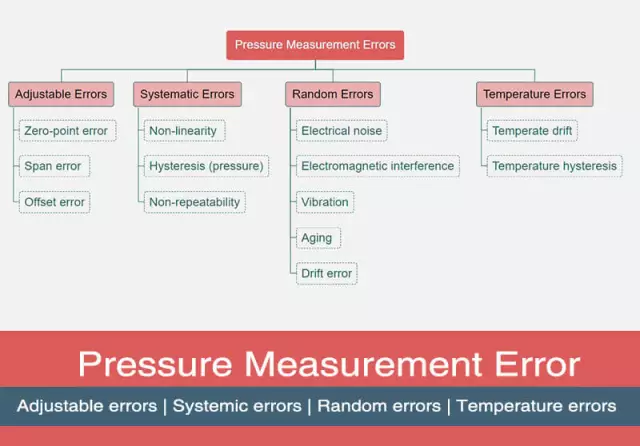- Author Rachel Wainwright [email protected].
- Public 2023-12-15 07:39.
- Last modified 2025-11-02 20:14.
Pressure measurement

Blood pressure measurement is an important diagnostic test method. Measurement of blood pressure is considered by doctors as the main pre-medical procedure, which, as needed, is important to be able to independently at home.
Pressure measuring apparatus
For these purposes, a special apparatus for measuring pressure, called a tonometer, is used. It consists of the following elements:
- Sphygmomanometer;
- Pressure gauge.
The main parts of the sphygmomanometer are a rubber cuff for clamping an artery and a balloon (pump) for injecting air. Pressure gauges are spring and mercury.
Usually, blood pressure monitors are used to measure blood pressure using a stethophonendoscope (stethoscope, phonendoscope). The measurement is made according to the Korotkov auditory method.
Basic rules for measuring blood pressure
Blood pressure should be measured according to the following rules:
1. The room must be warm;
2. The patient should sit comfortably or lie on his back. Before measuring the pressure, the person should rest for 10 to 15 minutes. It should be noted that in the supine position, the pressure is usually 5 - 10 mm lower than when measured in a sitting position;
3. Immediately during the measurement of blood pressure, the patient should remain calm: do not talk or look at the device for measuring blood pressure;
4. The patient's arm should be completely naked, palm facing up and comfortably at heart level. The raised sleeve should not press on the veins. The patient's musculature must be absolutely relaxed;
5. The remaining air is carefully expelled from the cuff of the pressure measuring apparatus;
6. Place the cuff tightly on the arm, while not tightening it tightly. The bottom edge of the cuff should be 2 to 3 cm above the fold at the elbow. Then the cuff is tightened or fastened with Velcro;
7. A stethoscope is attached to the inner dimple on the elbow, tightly, but without pressure. It is best if it comes with 2 ears and rubber (polyvinyl chloride) tubes;
8. In complete silence, with the help of a balloon of a pressure measuring device, air is gradually injected into the cuff, while the pressure in it is recorded by a manometer;
9. Air is injected until the tones or noises in the ulnar artery of the tone stop, after which the pressure in the cuff is slightly raised by about 30 mm;
10. The air injection is now stopped. A small valve at the bottle opens slowly. The air starts to come out gradually;
11. The height of the mercury column (value of the upper pressure), at which a clear noise is heard for the first time, is fixed. It is at this moment that the air pressure in the pressure measuring apparatus decreases compared to the pressure level in the artery, and therefore a wave of blood can penetrate into the vessel. Thanks to this, the tone is called (in sound it resembles a loud pulsation, heartbeat). This value of the upper pressure, the first indicator, is an indicator of the maximum (systolic) pressure;
12. As the air pressure in the cuff decreases further, vague noises appear, and then tones are heard again. These tones gradually increase, then become clearer and more sonorous, but then suddenly weaken and completely stop. The disappearance of tones (heartbeat sounds) indicates the indicator of the minimum (diastolic) pressure;
13. An additional indicator revealed when using pressure measurement methods is the value of the pulse pressure amplitude or pulse pressure. This indicator is calculated by subtracting from the maximum value (systolic pressure) the minimum (diastolic pressure). Pulse pressure is an important criterion for assessing the state of the human cardiovascular system;
14. Indicators obtained using pressure measurement methods are written in the form of a fraction, separated by a slash. The upper number means the value of systolic pressure, the lower one - diastolic.
Pressure measurement features

When measuring blood pressure several times in a row, you need to pay attention to some features of the body. Thus, the values of the indicators during the subsequent measurement, as a rule, turn out to be somewhat lower than during the first measurement. Exceeding the indicators during the first measurement can be caused by the following reasons:
- Some mental agitation;
- Mechanical irritation of the nervous network of blood vessels.
In this regard, the blood pressure measurement is recommended to be repeated without removing the cuff from the arm after the first measurement. Thus, applying the methods of measuring pressure several times, as a result, the average values are recorded.
The pressure in the right and left hand is often different. Its size may differ by 10 - 20 mm. Therefore, doctors recommend using methods of measuring pressure on both hands, and fixing the average values. The blood pressure is measured sequentially on the right and left hands, several times, and the values obtained are then used to calculate the arithmetic mean. For this, the values of each indicator (separately the upper pressure and separately the lower one) are added and divided by the number of times the measurement was made.
If a person has unstable blood pressure, the measurement should be taken regularly. Thus, it is possible to grasp the connection between changes in its level due to the influence of various factors (sleep, overwork, food, work, rest). All this must be taken into account when applying pressure measurement methods.
Normal values, when using any method of measuring pressure, are pressure readings at the level of 100/60 - 140/90 mm RT. Art.
Possible mistakes
It must be borne in mind that sometimes between the upper and lower pressure, the intensity of the tones can weaken, at times significantly. And then this moment can be mistaken for too high pressure. If you continue to release air from the pressure measuring device, the volume of the tones increases, and they stop at the level of the present lower (diastolic) pressure. If the pressure in the cuff is not raised enough, it is easy to mistake the systolic pressure value. So, in order to avoid mistakes, you need to correctly use the methods of measuring pressure: raise the level of pressure in the cuff high enough to "press", but releasing air, you need to continue listening to the tones until the pressure completely drops to zero.
One more error is possible. If you press hard on the brachial artery with the phonendoscope, in some people tones are heard to zero. Therefore, you should not press the head of the phonendoscope directly on the artery, and the value of the lower, diastolic pressure should be recorded by a sharp decrease in the intensity of the tones.
Found a mistake in the text? Select it and press Ctrl + Enter.






